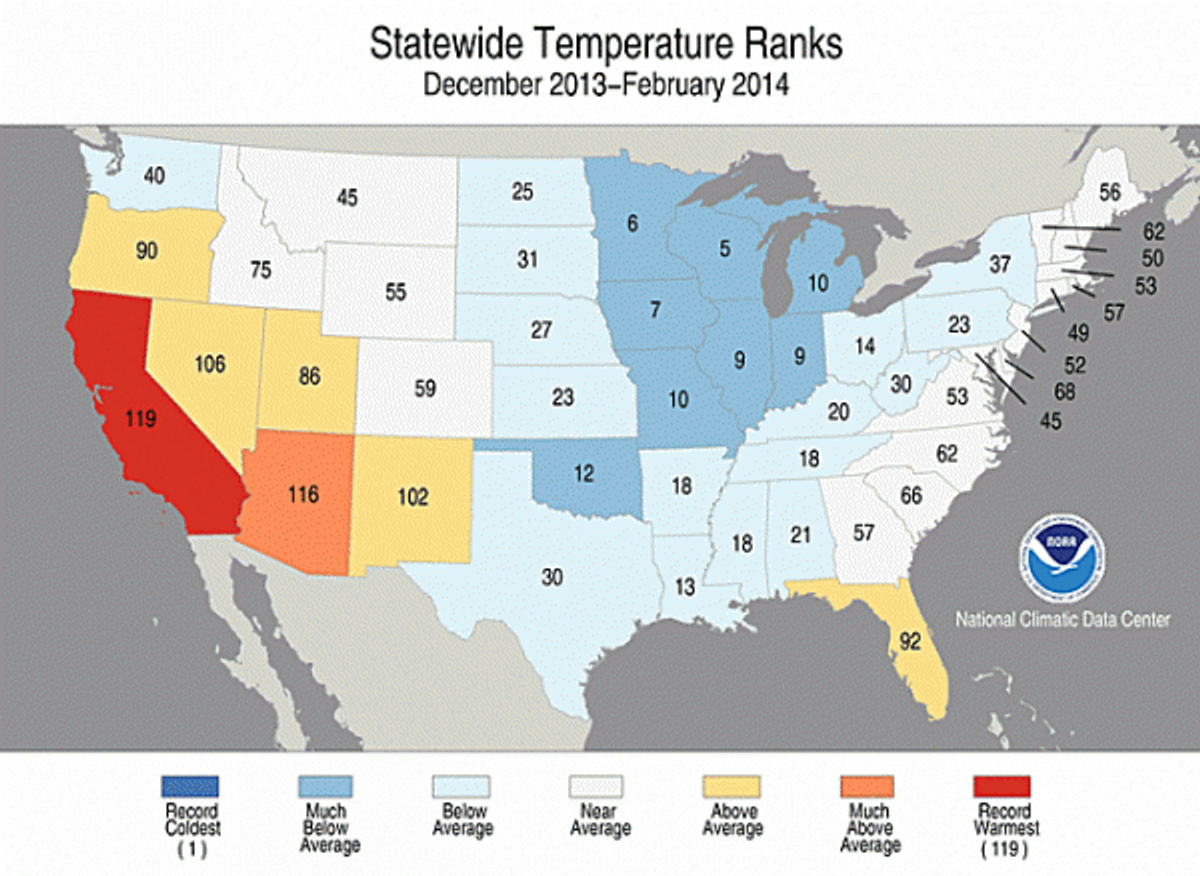In (most of) the U.S., it was cold this winter. Polar vortex cold. Below-average cold. The coldest, according to new data from the NOAA, in four years.
Unless you're in California, of course. The state just experienced its warmest winter in recorded history -- a full 119 years. (No state, noted NOAA climate scientist Jake Crouch, had a record cold winter.) The statewide average temperature was a balmy 44 degrees, 4.4 degrees above average. Like most of the West and Great Plains regions, the winter was also remarkably dry: California's third driest, with 7.26 inches of rain fewer than the 20th century average.
As Mother Jones points out, whether climate change contributed to this winter's cold is still up for debate, as is the precise role that global warming is playing in California's weather. But the evidence that something is off is piling up. More findings from the report:
- As of March 1, reservoirs across central and northern California had storage levels between 36 percent and 74 percent of their historical averages for the date. Locations in northern and central California would need over 18 inches of precipitation over the next three months to end the current drought, which would be highly unusual.
- In southeastern California, several locations logged their highest February temperatures on record. Bishop hit 81 F (27.2 C) on the 13th to tie Feb. 27, 1986, for the highest February temperature in a 120-year record. Temperatures soared to 84 F (28.9 C) in Palmdale on both the 13th and 14th, the highest February temperature recorded since records began there in 1934. Fresno recorded its warmest February in a 67-year record with an average 56.8 F (13.8 C).
- By Feb. 25, 26 percent of the state was categorized as D4, "exceptional drought," according to the U.S. Drought Monitor. At the beginning of 2014, no portion of the state qualified for this category. Most of this D4 region lies in the central part of the state, which received significant precipitation over the last few days of the month, so it is anticipated improvements will be seen in next week's iteration of the Drought Monitor. Rangelands are in very poor condition and hundreds of thousands of acres of agricultural land will likely be fallowed this growing season.
- The persistent cold during winter resulted in 91 percent of the Great Lakes being frozen by the beginning of the March, according to NOAA's Great Lakes Environmental Research Laboratory. This was second-largest ice cover for the Great Lakes since records began in 1973, and only surpassed by the Great Lakes ice cover in 1979.



Shares